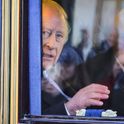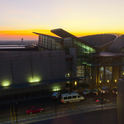The first British troops scheduled to fly into Bagram airbase outside Kabul in November 2001 nearly didn’t make it. Northern Alliance (NA) leaders, who had driven the Taliban out of the city with the help of US Special Forces a few days earlier, refused to allow the British plane to land. Their leader, Abdullah Abdullah, was furious that London was sending troops without asking permission first. He telephoned the head of the UN mission to Afghanistan, Francesc Vendrell, and informed him with some alarm that “the British are invading!”—as they had, twice, in the 19th century. Jack Straw, the Foreign Secretary, recalled that “all hell broke loose.” Eventually, the NA leadership calmed down and allowed the Brits to land.
The first British soldiers had next to no warning of their deployment, no strategic plan and were lacking the right equipment. Coming just two months after 9/11, such confusion and lack of preparation was perhaps understandable. But Whitehall was repeatedly unprepared in the years ahead, too. It was a grim opening salvo.
Theo Farrell’s book is entitled Unwinnable, and with good reason: what followed for the next 13 years was an unremitting tale of miscalculation, confusion, overstretch, poor planning and political paralysis. The British were caught between high-minded promises made to Afghanistan and backroom deals with America and Pakistan. The US had its eyes on Iraq, which always seemed a more important prize. And the Afghans, sensitive to imperial meddling, had conflicting priorities of their own. Winning here was all but impossible: as Farrell suggests near the opening of the book, “in retrospect, Britain should have probably quit while it was ahead” in late 2002. By the time UK forces formally withdrew in 2014 (some personnel are still there in an “advisory capacity”) 453 British soldiers had been killed and 2,000 wounded, 600 receiving “life-changing” injuries. The estimated cost was £37bn.
This isn’t to say that there weren’t days of glory early on. Fresh from successful interventions in Kosovo and Sierra Leone, Tony Blair was initially enthusiastic about the idea of nation-building. When he became the first western leader to land in Kabul after the Taliban fell in January 2002, the prime minister promised Afghans that the west would stay the course.
These weren’t just fine words. In the teeth of US scepticism—George W Bush had made his own opposition to nation-building clear, and the US National Security Council issued a controversial paper arguing that peace-keeping was a “failed concept”—the British successfully implemented a UN plan to secure Kabul, under the control of the International Security Assistance Force (Isaf), led by the UK’s General John McColl. Even though soldiers from some other countries refused to leave their armoured vehicles, McColl insisted that his men patrol on foot through the city’s bazaars, where they were greeted by Afghans offering them flowers, sweets and fruit.
This success was short-lived. When the UN asked for peace-keeping troops for all the major cities and highways, US Defence Secretary Donald Rumsfeld refused, and repeatedly snubbed McColl—even declining to meet him once when he visited Kabul, according to my sources.
Within weeks, Whitehall realised that Bush wanted to target Iraq and had no plans to sustain a large force in Afghanistan, much less engage in nation-building. Blair then pivoted, a shift that was to have detrimental consequences for British foreign and domestic politics. “By early 2002 Blair had taken the decision to ‘hug America close’ as the best way to moderate the unilateralist tendencies of the Bush administration,” writes Farrell. “As one No 10 aide explained, ‘what we wanted to do was influence American decisions, to be a player in Washington.’”
In fact, as senior British officials despondently made clear to Farrell (and to me), by playing to the American tune, Blair was to lose all influence. It was the worst of all worlds: Britain became a satrap for the Americans in Iraq, while the Americans had no interest in heeding British advice on Afghanistan.
As Farrell demonstrates, when telling the story of the British war in Afghanistan it is hard to underestimate the impact of US decisions and priorities. Washington provided an apparently endless litany of refusals. As well as rejecting the idea of a country-wide international peace-keeping force, the Americans also refused to accept a Taliban surrender in November 2001, and later declined to allow Afghan president Hamid Karzai to open talks with the Taliban or Iran. They also refused to get involved in the eradication of poppies, which Britain argued was key to a workable drugs policy in the country.
For the first four years of the war, indeed, the US declined to fund a professional Afghan army, instead relying on warlords to catch Osama bin Laden and keep the peace in the countryside, which they utterly failed to do. Until 2005, there were never more than 25,000 US troops in Afghanistan—hardly enough to control the major cities, let alone the country.
Eventually, as the US got bogged down in Iraq, Washington handed over the Afghan “burden” to Nato. But most Nato countries ended up fielding forces that were hemmed in by dozens of caveats, which involved everything from refusing to carry foreign soldiers in their helicopters to complete bans on getting involved in any fighting. Years of opportunities were wasted before 2005. Back at this time, Taliban remnants were hiding out in Pakistan and nation-building should have been eminently possible.
Things got worse in January 2006, when the UK agreed to an American request that they lead a Nato expansion into the south of the country. The Ministry of Defence—remarkably ready to agree with the US that “Britain was punching below its weight”—agreed to take on Helmand province, while the Canadians became responsible for Kandahar. The British had only the haziest idea what they were getting into. Later that year, the Defence Secretary John Reid announced that “we would be perfectly happy to leave in three years and without firing one shot.” An MoD paper admitted that “we don’t know much about either place.”
Whitehall allocated £1bn for a three-year deployment, with the UK joint plan for Helmand calling for “an effective, representative government in Afghanistan, with security forces capable of providing an environment in which sustainable economic and social development can occur, without sustainable security support from the international community.” As Farrell writes, this ambition “was staggering given the scale of the challenge,” while “the joint plan itself pointed to a catalogue of profound problems.” Only 3,000 troops were originally sent out.
Farrell does not mention the last, crucial, element: political geography. An American general had earlier told me that between 2001 and 2005 the US had not bothered to monitor Taliban activity in the south or across the border in Quetta, the capital of Pakistan’s Balochistan province where the movement’s leadership was based. The general assured me that “Nato would pay the price for the military’s lack of a look-down satellite capability.”
Initially, the British too were completely blind to how important Helmand was to the Taliban insurgency and how the province, with its long desert border with Pakistan, allowed drugs to flow out and recruits and ammunition to flow in. By 2007, western intelligence reports were all pointing to the role of Pakistan in providing sanctuary, training and supplies.
As the Helmand operation began, soldiers took up position in the province’s district centres, after which they were almost immediately besieged. The problems were manifold: too few troops, too few supply helicopters, too few battle-trained Afghan forces. Overstretched in a vast, stony desert, the troops fought for their lives in sand-bagged buildings resembling a Fort Apache from a John Wayne movie, while their leader, General David Richards, issued increasingly urgent pleas to the MoD for more resources.
In addition, British officers had to deal with the intricate tribal politics of the region, while President Karzai insisted on maintaining his cronies and friends as governors and police chiefs, even though they were smuggling drugs or in league with the Taliban. Eight months later, in August 2006, the British retreated from Musa Qala, a district centre where there had been intense fighting. US criticism was withering.
Curiously, Farrell fails to say why the British put up with it for so long—even though its soldiers were at the receiving end of Pakistani-backed Taliban reinforcements and firepower. When I asked British officers and diplomats about their silence, they told me they had been warned not to criticise Pakistan in the media because the army’s supply lines for Helmand came through the Pakistani port of Karachi and up to Quetta. A more important reason, I discovered, was MI6’s attempts to work closely with Pakistan’s Inter-Services Intelligence (ISI) on preventing British-Pakistanis and Kashmiris carrying out terrorist attacks on UK soil. The British were trapped into keeping silent.
By 2009, when Barack Obama ordered 30,000 additional troops to Afghanistan, including 9,000 marines into Helmand with 20 times the number of helicopters that the British had access to, UK public opinion had turned decisively against the war in Afghanistan. The public was never fully informed about the reasons for continuing the deployment, possibly because the government was so deeply divided about its intentions. Gordon Brown—who became prime minister in 2007—never believed in the conflict. When General Richards took over as commander-in-chief of UK land forces, he was appalled at the apathy in Whitehall and the refusal of the government even to admit the country was still at war.
There have been many books written on this subject, but Farrell’s stupendous research, clear vision and succinct writing are likely to outlast them all. There was so much fighting on so many different battle fronts that it would be easy for readers to become confused—but Farrell keeps everything crystalline.
Like a general surveying the battlefield from on high, he gives us every angle: from policy debates in Washington, Berlin, London, Camp Bastion and Kabul to the ditches where the mines went off and the hospitals where the limbs of the British wounded were amputated. Farrell does not flinch at describing the pity of war.
Late in Unwinnable, the author explains in a short aside the change of tactics by the Taliban and their large-scale use of mines and improvised explosive devices (IEDs), which by 2008 were responsible for the deaths of over half of all combat troops. This has the effect of highlighting one thing that is missing from the book—a more consistent review of the tactics and politics of the Taliban.
Who made up their forces when the British arrived, as opposed to by the time they left? No numbers on combatants are provided and there is very little on how Taliban motivation, ideology, strategy and battle tactics changed over a decade. Moreover, how did British army opinion and intelligence on the Taliban evolve? It seems ironic that even now, four years after withdrawal, the British still don’t seem terribly interested in the people they fought for 13 years.
Today Helmand is almost entirely in the hands of the Taliban and other militant groups. Lashkargah, the provincial capital, is surrounded; the roads are impassable. Heroin is still the currency of choice for the Taliban, and Pakistan is still a haven. Despite the sacrifices of soldiers and civilians—British, American and Afghan—the Helmand campaign was probably the most controversial and demoralising the British army has fought in the modern era. For a long time to come, it will provide important lessons for the British army and historians—especially as Islamist militancy continues to spread.
Whether anyone heeds them, though, is hard to assess. The latest deployments of limited numbers of UK, US and other special forces in Iraq, Syria, Libya and elsewhere are being carried out in greater secrecy than before. The British public is even less well informed than it was in 2001.

Success in Afghanistan was short-lived. Photo: Getty
Theo Farrell's Unwinnable shows Britain never had a chance in Afghanistan
And the public is even less informed than they were in 2001
January 24, 2018











